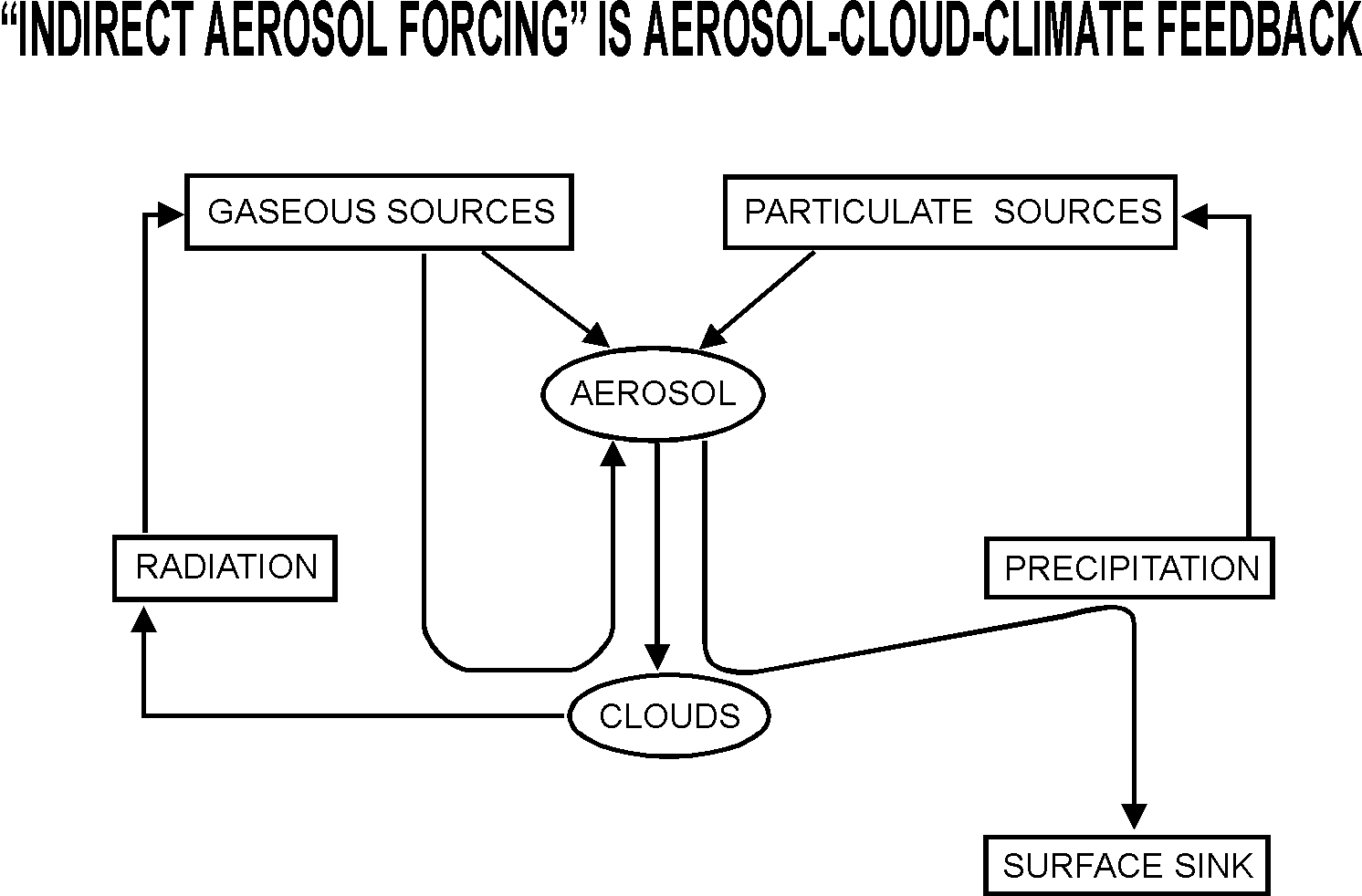GACP Meetings
First Science Team Meeting
Notes from Discussion Group D: Indirect Aerosol Effect
Moderator: Peter Hobbs; Rapporteur: William Rossow
Discussion outline:
* What can we say about this topic now?
* What are the key parameters?
* How do we get the key parameters?
Discussion was stimulated by comments from the modelers, the satellite observers, and the in situ observers; there was not time for discussion about needed laboratory measurements. A summary of the "key" parameters essentially led to a list of nearly all parameters, viz., aerosol properties (number and mass density, size distribution, vertical and geographic distribution, composition as a function of size, physical constants such as activation efficiency and hygroscopy, and optical constants such as real and imaginary index of refraction and shape), cloud properties (layer thickness, droplet size distribution, number density and effective radius, cloud water content and path, cloud cover fraction and top and base locations, cloud optical properties such as albedo and emissivity, cloud particle phase, and presence of precipitation, particularly drizzle), and atmospheric properties (humidity profile, vertical velocity, horizontal winds, especially in the boundary layer and at the surface). A particular modeling concern was to obtain information on aerosol sources. Particular satellite remote sensing concerns were how to identify and treat so-called "mixed pixels" (i.e., inhomogeneous fields-of-view), how to deal with lack of information about vertical distributions, and what limitations on high-resolution retrievals are caused by use of plane-parallel radiation models instead of 3-D models. Particular concerns for in situ measurements were to add wind (especially vertical velocity) measurements, to add "broken cloud" cases, and to conduct more Lagrangian measurement campaigns.
The discussion illustrated some of the difficulties in defining the actual "indirect effect" problem and limiting the scope of initial investigations. The figure below shows one representation of the complexity of the problem and suggests two first research steps.

Recommendation 1: Since models approaching the complexity of the system in the figure are a new capability that has not be very thoroughly explored, initial model studies should focus on identifying the most critical parameters within our current understanding. Emphasis should also be placed on determining relationships among these critical parameters and the modeled properties of aerosols and clouds.
Recommendation 2: Available ground-based, aircraft and satellite datasets should be examined to develop a large number of "in-and-out-of-plume" case studies by combining observations of aerosol and cloud properties with wind datasets to identify instances where these properties can be compared with and without a significant aerosol source for the area.


